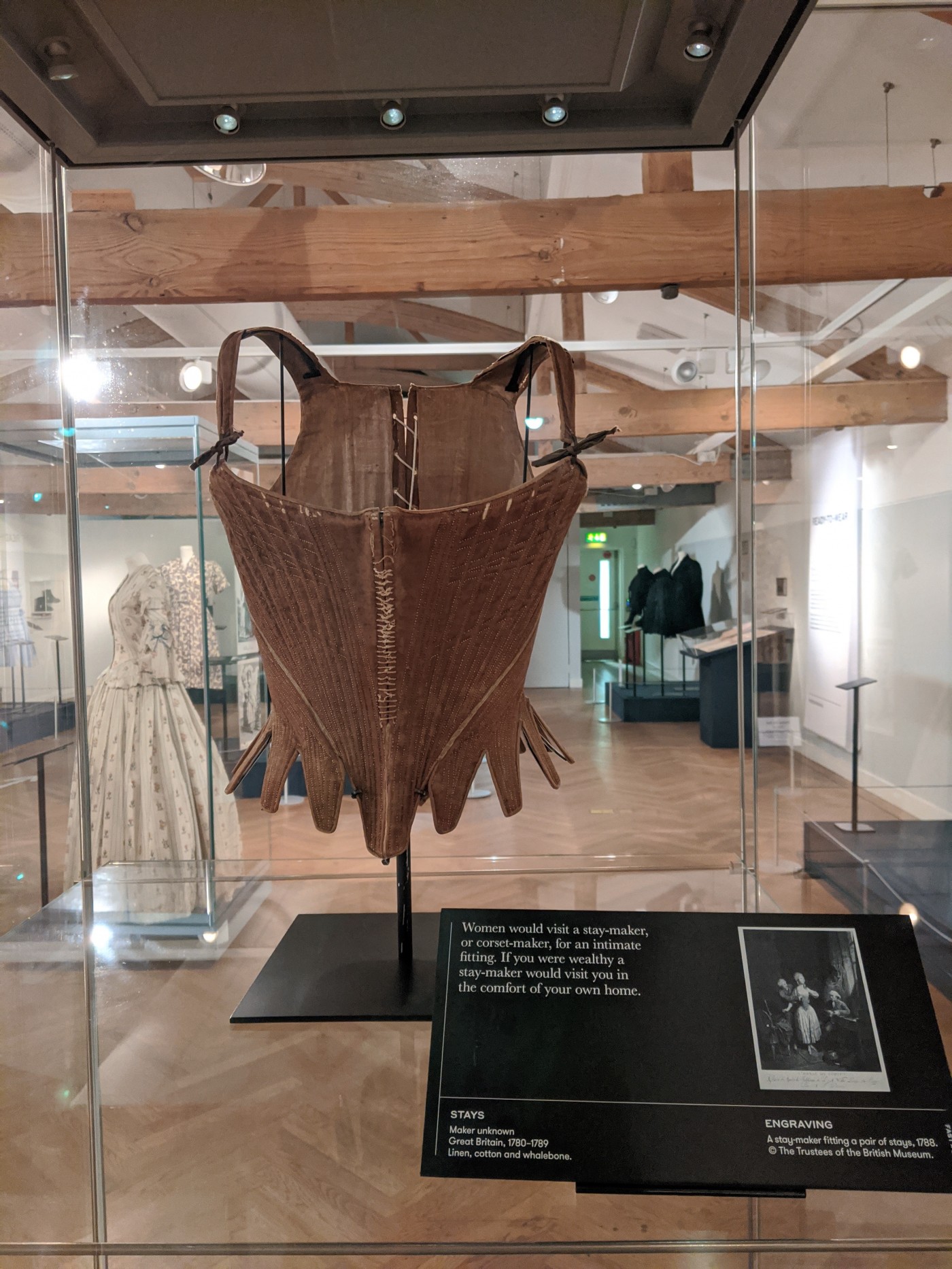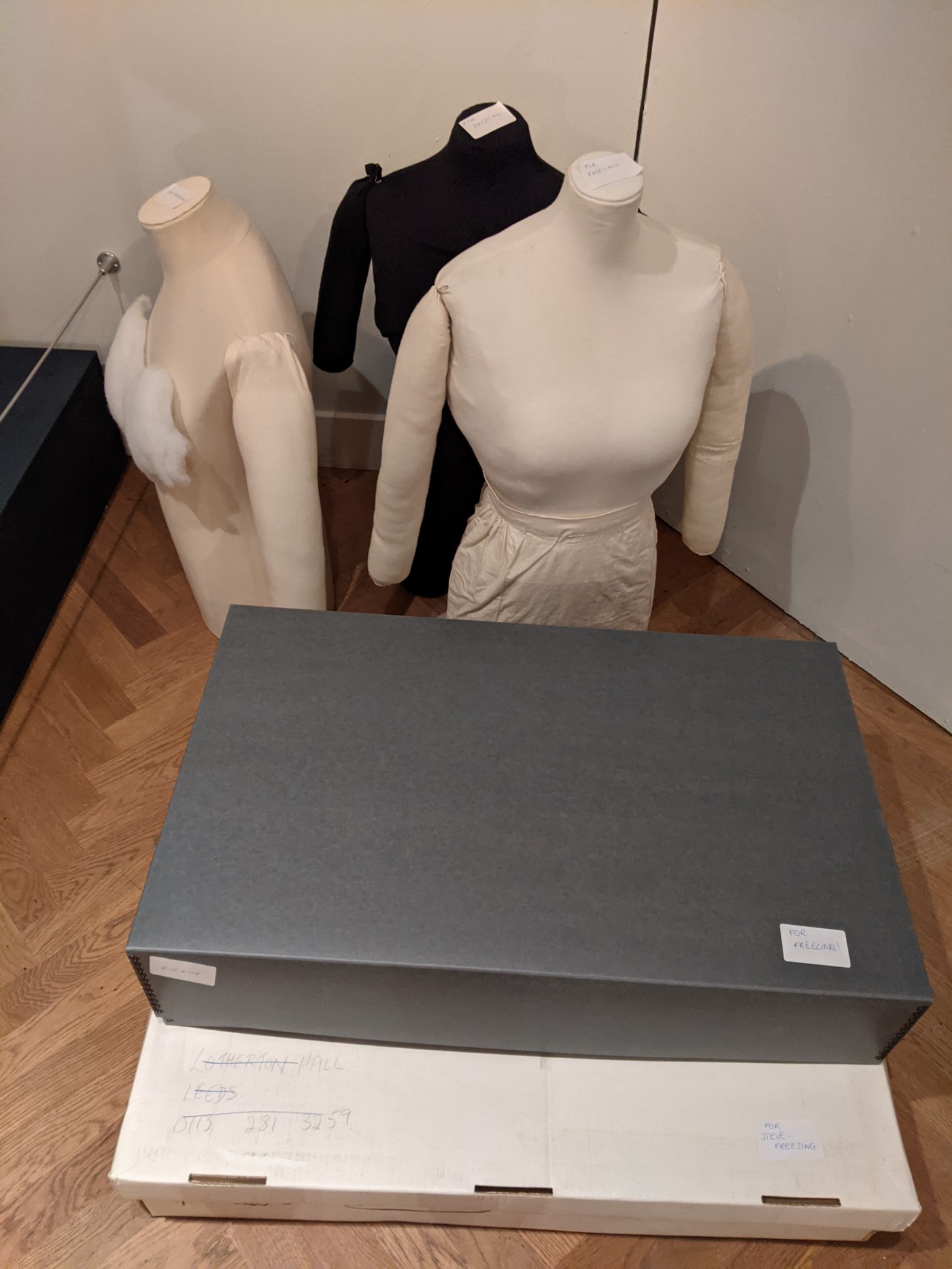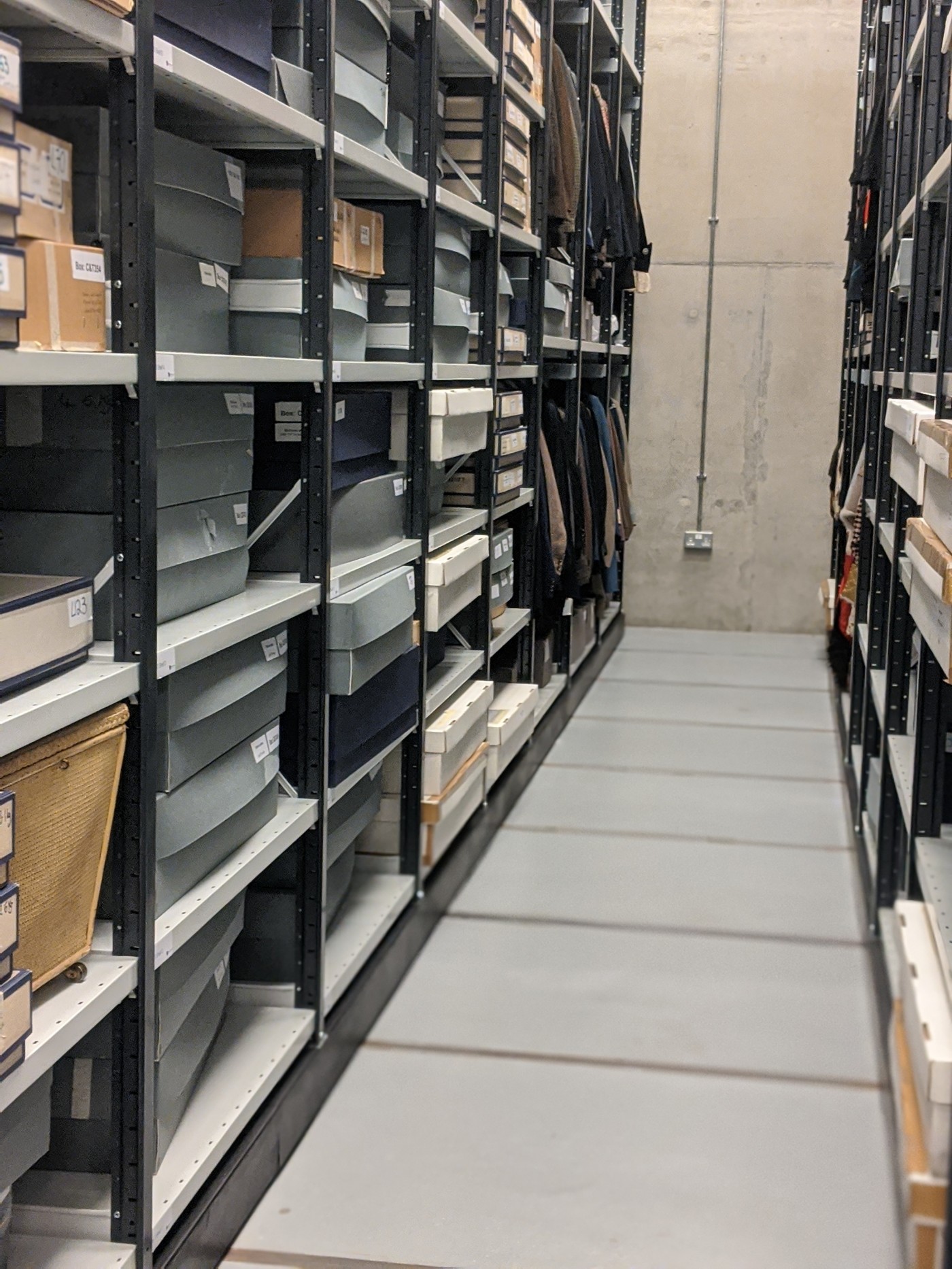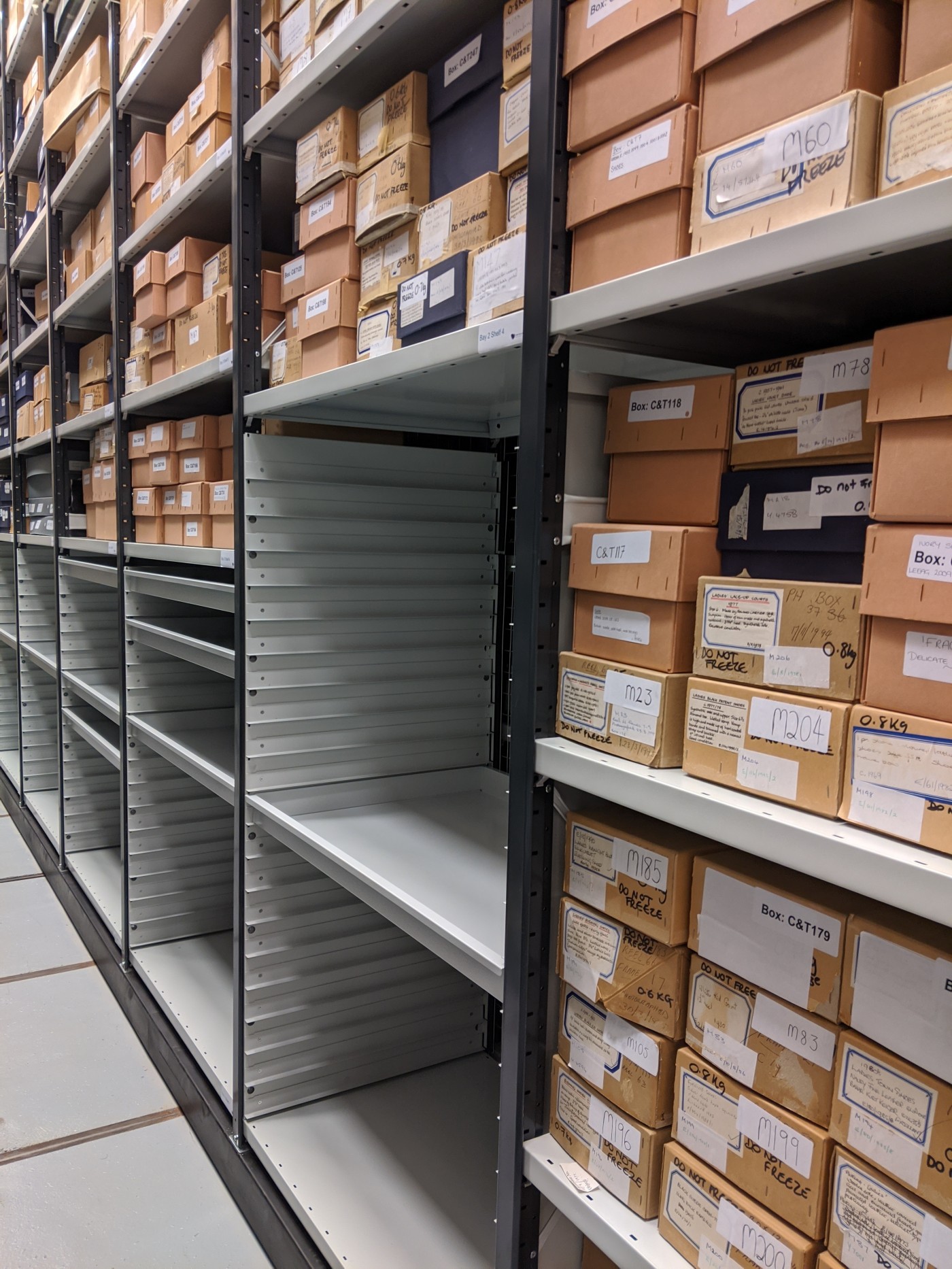- youtube
- bluesky
- Home
- About
- Costume Journal
- Membership
- Conference & Events
- Grants & Awards
- News & Social
In this week's blog, Vanessa Jones, assistant curator of dress and textiles at Leeds Museums and Galleries, describes her own experiences of caring for costume collections amidst COVID-19.
When the coronavirus pandemic was declared in March of last year, whole countries were plunged into a sudden state of lockdown. For the museum sector, this meant access to costume collections, textile stores and exhibition spaces was restricted virtually overnight, presenting curators and other members of staff with a wealth of potential problems to overcome. For Vanessa Jones, Assistant Curator of Dress and Textiles at Leeds Museums and Galleries, it was time to get creative: here, Vanessa describes her own experience of caring for costume collections amidst COVID-19.
When coronavirus was declared a pandemic and a nationwide lockdown was implemented in Britain, industries across the country were left with little choice but to work from home. As a curator of dress and textiles, the sudden closure of museums stores and exhibition spaces posed several problems. Leeds Museums and Galleries has dedicated site-specific teams who continue to visit all of our nine sites, to ensure the general security of buildings and the safety of objects. But the abrupt loss of continuous access to collections in 2020 was nevertheless concerning: I knew that objects could have been stored more appropriately and there were a number of items on open display at Leeds City Museum. When lockdown measures were eased in August, I finally returned to the store. All staff were on a rota and I was now going in 1 day a week, out of my usual 3. The time allocated to working onsite had to be planned and used effectively - I certainly wouldn't be at my desk reading emails. I decided that working on site would mean working in the store: putting objects that were in temporary locations back on racks or in cabinets and to check the condition of any particularly fugitive objects. I was also able to return to City Museum where the Fast x Slow Fashion I had curated was displayed, where I checked for possible signs of infestations and dusted objects to prepare for re-opening.
As the Tier systems were implemented Leeds fluctuated from 2 to 3. My priorities shifted from store work to exhibition de-install. The exhibition had now been extended by 5 months but was cut short as the museum was forced to close for the second time. The exhibition de-install at City Museum took place in December. With a new found respect for forward planning, I prioritised which objects came off display first. I decided all objects on open display should be taken down initially, as they were more vulnerable to pests and any changes to the galleries monitored environment. Unfortunately, two clothes moths were detected nestled into a twentieth-century wool suit. A hole was noticeable and tiny wriggling larvae identified. A dead moth was also spotted on the back of a polyester shalwar kameez however there was no damage to the object. This infestation was an unwelcome reminder of the need for continued monitoring of objects, regardless of whether the environment the objects are in seems ideal.
The takedown that proceeded was thorough and every object on open display was inspected with great care to ensure no further infestation. The suit and the shalwar kameez were packed in separate boxes and were the first to return to the store, the Discovery Centre, for freezing. Each outfit was mounted on a mannequin which were returned and frozen at the same time. The rest of the garments that were packed were taken a few days later, as space in the freezer became available. As de-install took longer than expected the takedown of the exhibition would now run into the New Year. But when January of this year came around, our plans to continue with de-install were thwarted once more – this time, with the introduction of another national lockdown. Visiting sites for many curatorial staff stopped; due to the pest infestation noticed in December, objects that were considered more vulnerable were identified and a plan was put in place to ensure they were closely monitored by onsite team members. A very valuable lesson was learnt from the last lockdown: the objects that remained on display were all in museum-grade cases, but it is not unheard of for pests to somehow find their way into them. Two objects of particular concern were an eighteenth-century men's wool suit and Leeds Museums' earliest silk robe, which is lined in glazed wool. I asked that specific objects were monitored closely during this next phase of lockdown, photographs were shared and possible signs to look out for were explained. Any signs of infestation and I would return to site, as dealing with an infestation would be classed as essential work.
Caring for collections when your physical presence is not always possible has been a challenge, but work can still be done. Good communication between site teams has meant that only one object, as far as we know, has been adversely affected. It has also been a useful time to reflect and learn from previous experiences. As many curatorial colleagues will no doubt sympathise with, I will be relieved when I can finally de-install the last few objects from the exhibition and work can continue in the store on a more permanent basis.
Vanessa Jones is the assistant curator of dress and textiles at Leeds Museums and Galleries https://museumsandgalleries.leeds.gov.uk/.
She is lead curator of the Fast x Slow Fashion exhibition, which explored the consumption of clothes in Leeds from 1720 to 2020 https://museumsandgalleries.leeds.gov.uk/virtual-visit/fast-x-slow-fashion-online-exhibition/.

Cabinet containing eighteenth century men's jackets. Thanks to Leeds Museums and Galleries. © Vanessa Jones.

City Museum in August, checking on objects in the Fast x Slow Fashion Exhibition. Thanks to Leeds Museums and Galleries. © Vanessa Jones.

City Museum in August, checking on objects in the Fast x Slow Fashion Exhibition. Thanks to Leeds Museums and Galleries. © Vanessa Jones.

Back at City Museum in December to de-install the Fast x Slow Fashion Exhibition. Thanks to Leeds Museums and Galleries. © Vanessa Jones.

Back at Leeds Museums Discovery Centre, putting objects back on shelves. Thanks to Leeds Museums and Galleries. © Vanessa Jones.

Back at Leeds Museums Discovery Centre, putting objects back on shelves. Thanks to Leeds Museums and Galleries. © Vanessa Jones.